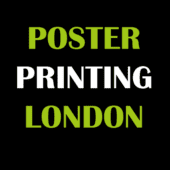Title: Understanding the Cost of Printing Posters: Factors to Consider
Introduction:
Printing posters is a common practice for various purposes, including advertising events, promoting businesses, or showcasing artwork. However, the cost of printing posters can vary depending on several factors. In this article, we’ll delve into the various factors that influence the cost of printing posters and provide insights to help you understand the pricing structure.
Factors Influencing Poster Printing Costs:
- Size: The size of the poster is one of the primary factors determining its printing cost. Larger posters require more materials and ink, resulting in higher production costs. Common sizes for posters include A3, A2, A1, and A0, with larger sizes typically costing more to print.
- Paper Quality: The choice of paper stock also affects the cost of printing. Standard paper stocks are more affordable, while premium or specialty papers may come at a higher price point. Factors such as thickness, finish (matte, gloss, satin), and durability contribute to the overall cost.
- Quantity: Printing posters in larger quantities often leads to volume discounts, reducing the cost per unit. However, printing a small batch of posters may incur higher costs per piece due to setup fees and overhead expenses.
- Color Complexity: Posters with intricate designs, multiple colors, and detailed graphics require more ink and precise printing processes, leading to higher production costs. Simple, monochromatic designs are generally more cost-effective to print than complex, colorful artwork.
- Printing Technique: Different printing techniques, such as digital printing, offset printing, or screen printing, have varying costs associated with them. Digital printing is suitable for short print runs and offers flexibility in design, while offset printing is more cost-effective for large quantities.
- Finishing Options: Additional finishing options, such as lamination, mounting, or framing, can enhance the appearance and durability of posters but may incur extra costs. These finishing touches add value to the final product but should be budgeted for accordingly.
Conclusion:
The cost of printing posters is influenced by several factors, including size, paper quality, quantity, color complexity, printing technique, and finishing options. By understanding these factors, individuals and businesses can make informed decisions when planning their poster printing projects and budgeting accordingly. Whether you’re printing a single poster for personal use or producing a large batch for a marketing campaign, considering these factors will help you achieve the desired outcome within your budget constraints. Additionally, consulting with a reputable printing service provider can provide further guidance on cost-effective printing solutions tailored to your specific needs.
